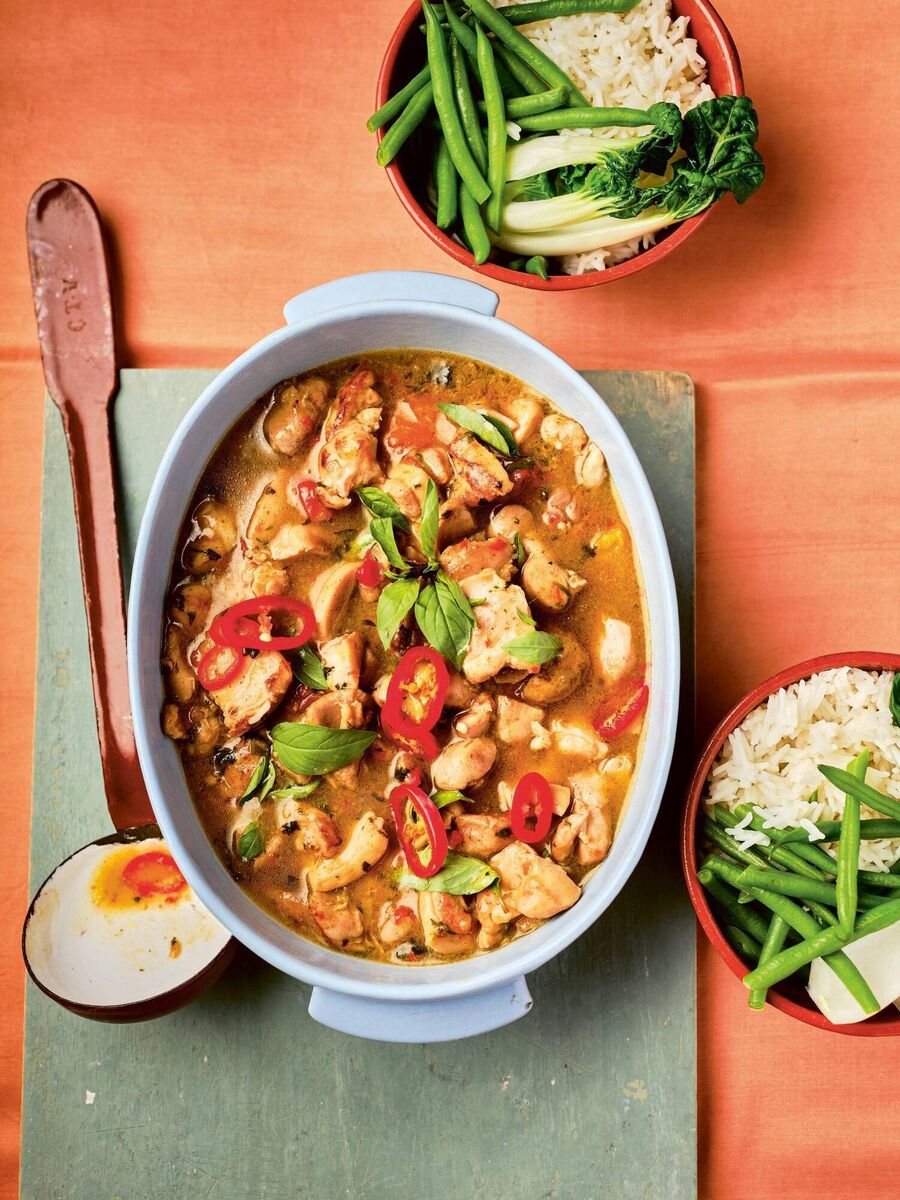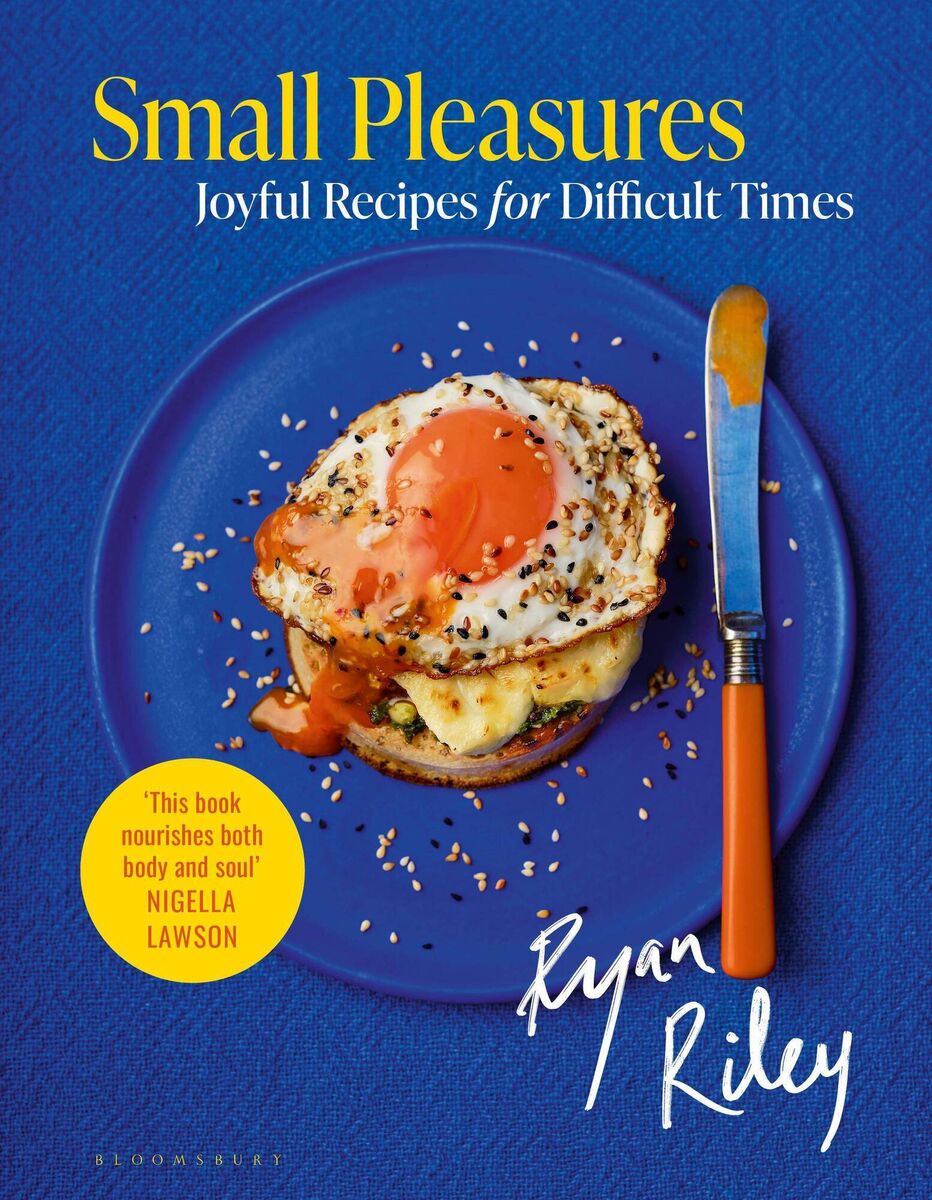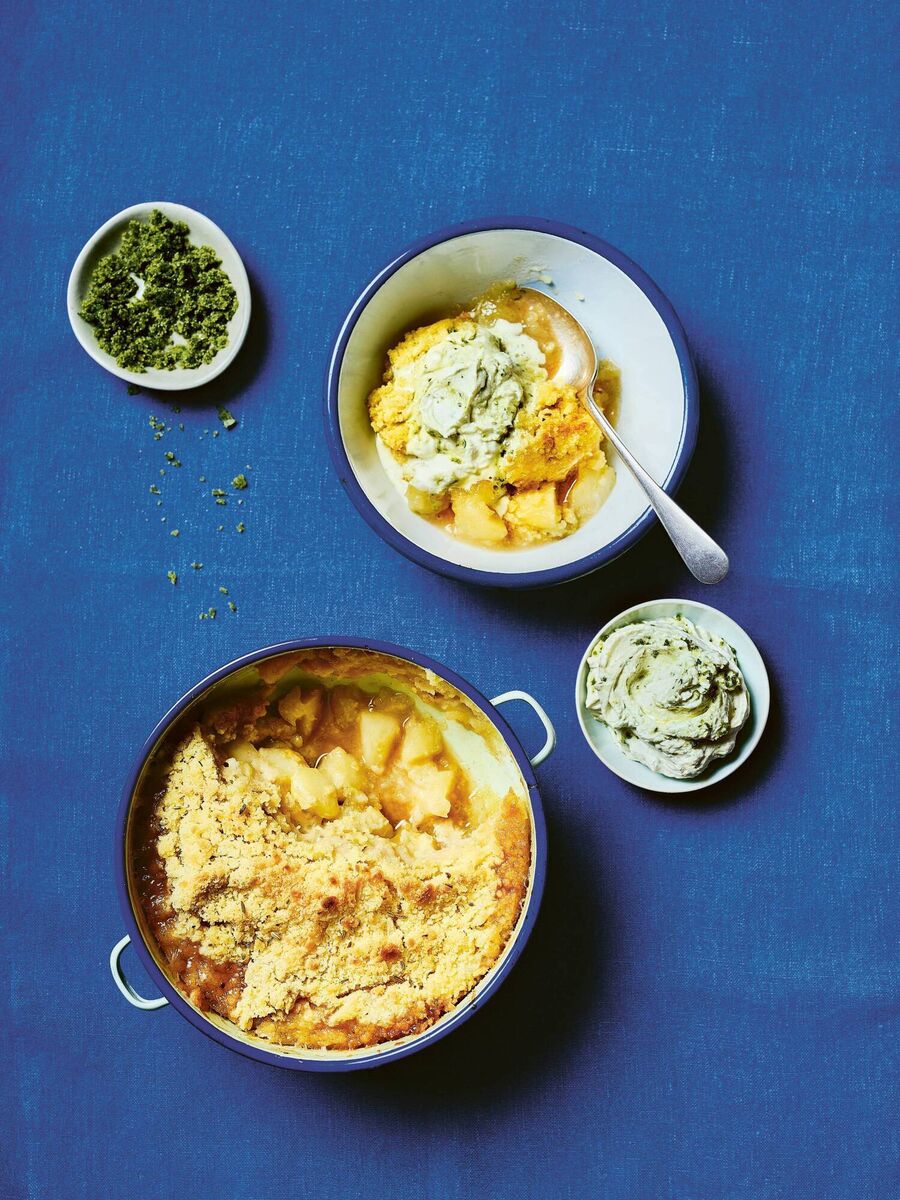Recipes to see you through a difficult time

Cauliflower and potato coconut curry by Ryan Riley.
CHEF and food writer Ryan Riley says it’s been “incredibly hard” forging a successful career while grieving his mother, who died of cancer when Riley was 20.


FRESH herbs and red chillies star in this flavourful Asian-inspired dish.
“This is a 30-minute midweek meal that doesn’t hold back when it comes to a warming, satisfying flavour explosion,” said Ryan.
6 boneless chicken thighs, cut into bite-sized pieces
4tbsp garlic paste
4tbsp ginger paste
1tsp ground coriander
¼tsp white pepper, plus extra to season
½tsp salt, plus extra to season
1tbsp vegetable oil
3 long red (Thai) chillies, finely chopped with seeds (keep back a few slices to garnish)
100g Thai basil leaves, finely chopped, plus extra to garnish
1 × 400g tin of full-fat coconut milk
300ml chicken stock
10 mixed-colour cherry tomatoes, halved
1tsp fish sauce
1tsp light soy sauce
1tsp light brown soft sugar
Steamed vegetables and boiled jasmine rice, to serve
1. Place the diced chicken into a bowl and add the garlic, ginger, ground coriander, white pepper and salt and mix well. Leave to marinate overnight if you have time, but for at least 10 minutes.
2. When you’re ready to cook, heat the oil in a large saucepan over a medium–high heat. Add in the marinated chicken and fry it for five to six minutes, turning, until the chicken begins to brown. Add the chillies and half of the basil, followed by the coconut milk and chicken stock. Simmer for 15 minutes, then add the cherry tomatoes, fish sauce, soy sauce and sugar, and simmer for a further five minutes, until the tomatoes are just softened and the chicken is cooked through. Remove the stew from the heat, season with salt and extra white pepper, and stir through the remainder of the basil. Scatter over the extra basil leaves and the chilli slices to garnish.
3. Serve with steamed vegetables and cooked jasmine rice.

This hearty veggie dish is a brilliant winter warmer.
“Never underestimate the simple, restorative power of a curry,” says chef Ryan Riley, co-founder of Life Kitchen, a not-for-profit cookery school for cancer patients.
“This cauliflower and coconut version sings with fresh flavours for an instant pick-me-up, without detracting from everything that is welcoming and familiar in a bowl of warm curry deliciousness.”
4 shallots, finely diced
5 garlic cloves
1 lime, zested and quartered
2cm piece of ginger root, peeled
1 long red (Thai) chilli, destemmed, plus optional extra slivers to serve
1 long green (Thai) chilli, destemmed
1½tbsp garam masala
1tbsp medium curry powder
3tbsp vegetable oil
1tbsp ground coriander
1 cinnamon stick (about 10cm long)
1 × 400g tin of full-fat coconut milk
1 large potato (I like Maris Piper), peeled and cut into 2cm pieces
1 cauliflower, florets separated 2tbsp smooth peanut butter 100g coriander, finely chopped Salt Boiled jasmine rice, to serve Method:
1. Put the shallots, garlic, lime zest, ginger, both chillies, garam masala, curry powder, oil, ground coriander and a sprinkle of salt into a food processor and blitz until completely smooth. Place the mixture into a large saucepan and add the cinnamon stick. Give everything a stir to make sure it doesn’t stick to the bottom of the pan and then place the pan over a low heat for about 20 minutes, until the mixture smells sweet and aromatic.
2. Remove the cinnamon stick and then add the coconut milk and about 100ml of water and stir to combine.
Add the potato, simmer over a low heat for 20 minutes, then add the cauliflower. Stir well and simmer for another 10 minutes. Finally, stir in the peanut butter and mix well until the sauce is combined. Remove the pan from the heat.
3. Stir half the chopped coriander through the curry, then ladle it into bowls and sprinkle with the remaining coriander to serve.
Serve with boiled jasmine rice, the lime wedges for squeezing over, and sprinkled with slivers of extra red chilli, if you wish.

Tamarind paste adds a tangy twist to the classic pud.
“Tamarind isn’t something you’d usually find in an apple crumble, but then neither are you likely to find fennel seeds in a crunchy crumble topping,” says chef Ryan Riley.
“I can assure you, though, that these simple twists do nothing but wow. Sweet-and-sour apple crumble is about to usher you in to a whole new era of dessert deliciousness.”
2 eating apples, peeled, cored and chopped into 1cm pieces 2tsp tamarind paste
1tsp ground cardamom
1tsp vanilla paste
1tsp caster sugar
2tbsp caster sugar
45g plain flour
1tsp ground fennel seeds
30g unsalted butter, chilled and chopped
1 lemon, zested, to decorate
For the sweet basil cream:
10 basil leaves
2tbsp golden caster sugar
100ml double cream
1. Preheat the oven to 180°C/160°C fan.
2. Place the apples, tamarind, cardamom, vanilla, sugar and a splash of water in a small saucepan over a medium heat. Cook for four to six minutes, until the apples are soft.
3. To make the topping, in a bowl, work the sugar, flour, ground fennel and chilled butter together with your fingertips, rubbing until the mixture resembles rough breadcrumbs.
4. Put the apple mixture into a medium-sized ovenproof dish (about 20–25 centimetres diameter), top it with the crumble mixture in an even layer and bake for 20–25 minutes, or until the top has turned golden brown and the filling is bubbling.
5. Meanwhile, make the sweet basil cream. Make a basil sugar by pulsing the basil leaves and sugar in a food processor until just combined. Set this aside while you whip the cream to soft peaks. Then, gently fold one tablespoon of the basil sugar through the cream until evenly combined. (You can store the remaining basil sugar for another dish; it will keep for up to three days in an airtight container, although it may lose some of its vibrant colour – but not its flavour – in that time.)
6. Scatter the lemon zest over the warm crumble, then serve in spoonfuls with sweet basil cream on the side.







 App?
App?


